As the Summer Solstice for the northern hemisphere has come around, the craving to celebrate at the world-famous Stonehenge Neolithic site has again proven irresistible to crowds of people wishing to watch the Sun rise above the Heel Stone and shine on the central altar. For those in the northern hemisphere, this is a time when the Sun’s path stops moving northward in the sky, the days stop growing longer and will soon begin to shorten again.
English Heritage, who manage the iconic Wiltshire site had planned to welcome those coming to celebrate, but with Covid measures in England extended until July 17, the anticipated numbers would have exceeded the 4,000 limit for public events, and so the event was cancelled. However, hundreds of dedicated people still arrived at the site and hopped over the fence into the main stone circle. The invasion was described as ‘peaceful’ by the police, but the illegal gathering still forced English Heritage to halt their live broadcast of the annual solar event, to the disappointment of more than 200,000 who had tuned in to watch the sunrise live at 04:52 BST. Another case of the determined dissenting few ruining things for the law-abiding majority.
But is the sole importance of the site to be placed on just a few dates in the year, or is there more to the complicated structure? Of course, its perfect alignment for the solstices make it the go to destination in England for the summer and winter solstices, but the full purpose of the Neolithic builders is still being fathomed out. Indeed, the mystery that surrounds Stonehenge is so enduring and popular that in recent years over 1.5 million visitors have flocked to this ancient monument each year. There are even several man-made copies of the world-famous heritage site have been built around the world, including an impressive full-scale replica at the Maryhill Museum in Washington, USA.

Painting of the Maryhill replica ( Michael D Martin / Flickr )
Astronomical Beginnings
Stonehenge was built in three phases between 3,000 BC and 1,600 BC. Stonehenge famously aligns to the solstices, but for the rest of the year it seems strange that these ancient builders would not be aware of the current day, or for that matter how many days remained to the next solstice event. There are those that argue that Stonehenge was used for more than just marking the winter and summer solstices, or as a sacred burial site.
In recent years, Lloyd Matthews (scale modelling expert based in the UK) and Joan Rankin (a retired historian living in Canada), have made an ambitious attempt to rethink the purpose of Stonehenge. Their conclusion, after three years of extensive and laborious research, was that the entire structure was, in fact, a complex and significant prehistoric calendar that could actually count the individual days in a year. Not only did Stonehenge act as a solar calendar, similar to the western calendar used today, but it also acted as a lunar calendar and was important for a developing agricultural society to successfully plan for the seasons.
Lloyd Matthews spent 6 years meticulously researching and constructing two scale models of Stonehenge for display at The Maryhill Museum of Art. The models show Stonehenge as it stands today and as it would have originally looked when built.
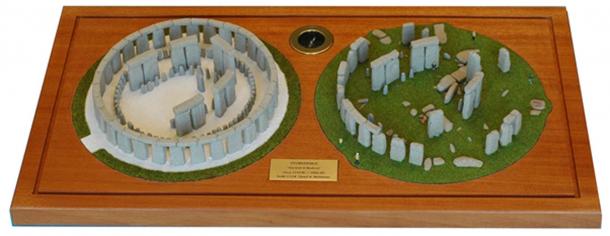
Lloyd Matthew’s models showing Stonehenge today and in the past. Credit: Lloyd Matthews
Summer Solstice is just the beginning (of the year?)
During its construction, Mr Matthews identified three distinct carvings on three of the large stones known as Trilithons. Curiosity piqued, Mr Matthews approached several experts at the time who were unable to provide an explanation as to what these symbols meant. Dissatisfied with the responses, Mr Matthews decided to continue his research into this ancient puzzle with the help of Joan Rankin, an authority in prehistory.
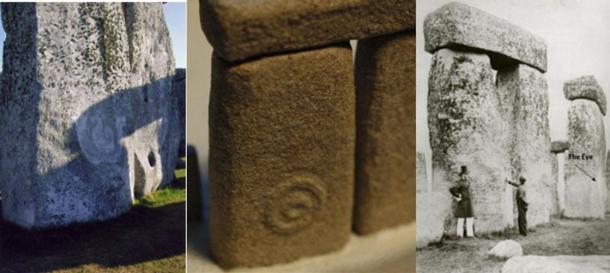
Stone 52 with ‘The Eye’ symbol. From Left: Stone 52 today , Replica of Stone 52 ( Credit: Lloyd Matthews), Stone 52 in 1867.
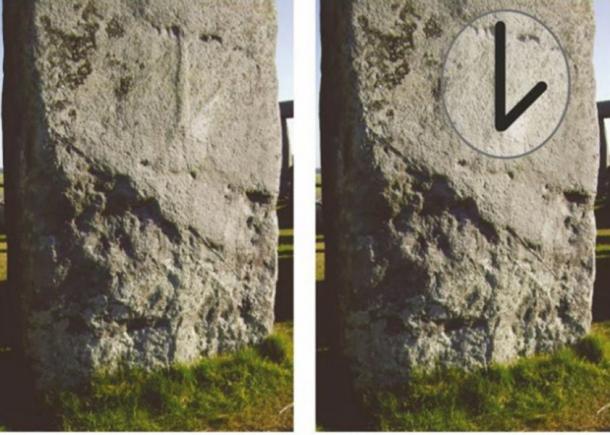
Stone 53 with ‘The Dividers’ symbol. Credit: Lloyd Matthews
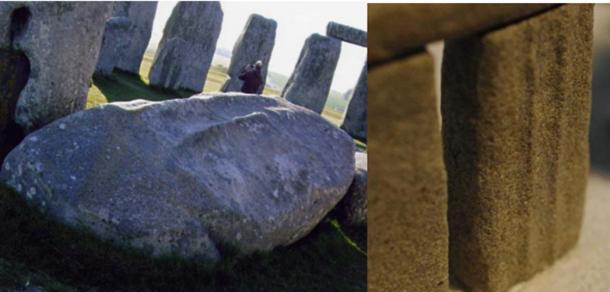
Stone 59 with ‘The Parallels’. Left: Stone 59 today. Right: Replica of Stone 59. Credit: Lloyd Matthews
Together, they may have not only successfully cracked the mystery of these three symbols but also discovered the original purpose of 56 unusual holes that were dug around Stonehenge during the very first phase of its construction, famously known as the Aubrey Holes. It appears that these holes could likely have been used as a calendar counting system used to keep track of each passing day, with six and a half revolutions around Stonehenge marking a full year, and using the rising of the Summer Solstice sun as a way of astronomically marking the starting point of each new year.
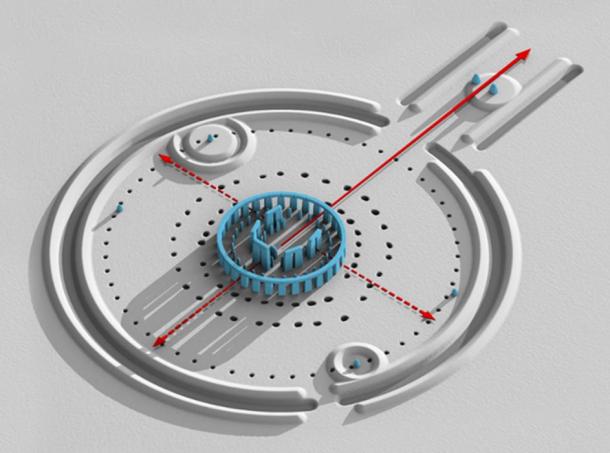
Replica of Stonehenge showing the Aubrey holes ( Public domain )
As for the mysterious shapes carved into the Trilithons, they have shown how these symbols may have been deliberately positioned to allow the ancient astronomers at Stonehenge keep track of other significant astronomical cycles, including its use not only as a solar calendar but also as a lunar calendar.
Dr Derek Cunningham, an established archaeological expert has even embraced this new theory himself, saying that “the idea is based on some solid observations. Not only can Lloyd now explain his three shapes, Joan’s ideas help explain the layout and also the number of Aubrey Holes seen at the site. Neither had been satisfactorily explained before.”
Dr Cunningham goes on to say, “Further work is expected, but it now appears that Stonehenge may finally be giving up some of its secrets.”
The full report on these findings can be read at the following links:
Original Source Material: Rankin, J., Matthews, J., & Matthews, L. (2015). The Stonehenge Carvings. Available HERE.
Article source: Rankin, J., Matthews, J., Matthews, L., & Cunningham, D. The Aubrey Hole Calendar – Why 56 Holes. Available HERE.
SOURCE The Office of Lloyd Matthews
Top image: Image of Stonehenge.
By James Matthews
 RSS Feed
RSS Feed















 June 22nd, 2021
June 22nd, 2021  Awake Goy
Awake Goy  Posted in
Posted in  Tags:
Tags: 













